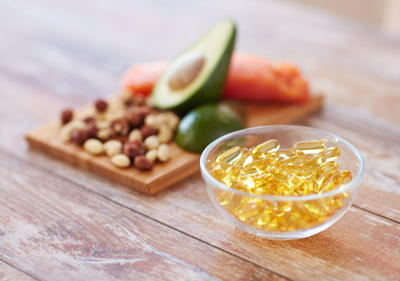|
We get asked multiple times if a person can ‘overdose’ on supplements. The answer is both yes and no. Depending on the type of vitamin ingested, some can be harder to absorb causing deficiencies, while others prove toxic at higher levels. So which vitamins should you be aware of? It all comes down to two groups of vitamins – fat soluble and water soluble.
Vitamins are classified as either fat soluble or water soluble, and the body requires enough of both to function optimally. The differing factor between the two groups is how each vitamin acts within the body.
Water-Soluble Vitamins
Water soluble vitamins are vitamins that our bodies do not store. There are nine water-soluble vitamins – vitamin C and the B-complex vitamins: thiamine (vitamin B1), riboflavin (vitamin B2), vitamin B6, vitamin B12, folic acid, biotin, niacin and pantothenic acid. These vitamins dissolve in water when ingested, then enter the blood stream. The body keeps what it needs at the time, and excess amounts are excreted in the urine. Since they can’t be stored, everybody needs a continuous supply of water soluble vitamins in order to stay healthy.
This is why someone is able to take on great quantities of vitamin C for example, when they are sick. The body takes on what it needs – more if the immune system is weakened, and excretes the rest. This is also why some of us notice bright yellow urine after taking a supplement. This is actually quite normal when taking multivitamins or B-complex vitamins. Your urine can sometimes turn a bright yellow or orange colour due to the presence of vitamin B2, also known as riboflavin. The vitamin’s name gives you a hint: Flavin comes from the word flavus, which means yellow. It is perfectly harmless, but if the colour bothers you, simply drink more water to dilute your urine.
Fat Soluble vitamins
Fat soluble vitamins (A, D, E and K) are usually absorbed in fat globules (called chylomicrons) that travel through the lymphatic system of the small intestines and into the circulatory system within the body. These vitamins, especially vitamins A and E are then stored in the body within the liver and fatty tissues for future use. Because of this, there is a possibility to have too much fat soluble vitamins as the body is not able to excrete what it no longer needs.
Not absorbing enough?
While it is possible to have too much, you could also be having too little. In order for your body to properly absorb fat-soluble vitamins and nutrients, you need to eat them with some fat.

Dietary fats are also needed for the conversion of carotene to vitamin A, for mineral absorption, and for many other biological processes. A simple way to boost absorption of these vitamins is to drizzle some olive oil over your salad, or eat your veggies with some avocado. Avoid processed vegetable oils such as corn, soy, safflower, sunflower, and canola. Corn and soy is typically genetically engineered and tend to be contaminated with glyphosate, which has recently been classified as a probable carcinogen. They also have a skewed ratio of omega fatty acids, being high in damaged omega-6s and low in healthy omega-3s. Another way is to take your Omega 3 Fish Oil with or after food.
Vitamins in supplements
The difference between these two types of vitamins should be reflected in the multivitamin you choose. Water soluble vitamins often have a DV% of more than 100% as the body may need more than normal on varying days, and can easily excrete the rest. On the other hand, the levels of fat soluble vitamins in your supplement, should not be over 100% DV as if you do require more, your body should have enough stored to compensate. The one exception of a fat soluble vitamin being safe over 100% DV is if the fat-soluble vitamin is of a natural form, as the body responds differently to the natural forms compared to those of synthetics. (Stay tuned for more on this subject in my next Supplement Smart blog).In good health.
|

 Youre Not Getting Enough Vitamin B6
Youre Not Getting Enough Vitamin B6  Fish Oil Relieves Joint and Back Pain, Reducing Need for NSAIDs
Fish Oil Relieves Joint and Back Pain, Reducing Need for NSAIDs  Being Fit does not always mean Healthy
Being Fit does not always mean Healthy 
 Youre Not Getting Enough Vitamin B6
Youre Not Getting Enough Vitamin B6  Fish Oil Relieves Joint and Back Pain, Reducing Need for NSAIDs
Fish Oil Relieves Joint and Back Pain, Reducing Need for NSAIDs  Being Fit does not always mean Healthy
Being Fit does not always mean Healthy